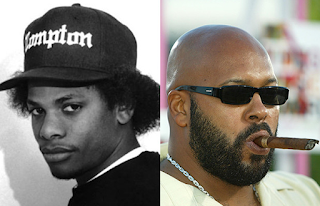It is a peculiar irony that the man who proclaimed humanity’s boundless potential should himself be reduced, in the end, to a body in a crypt, its organs blackened by poison. Giovanni Pico della Mirandola, the brilliant, unruly mind who had sought to map all human knowledge, died at thirty-one under circumstances as murky as his metaphysical aspirations. That his death was unnatural seems certain. That its cause, or its perpetrator, can ever be known is far less so. His end was one of those small, grim riddles of history — too strange for chance, too shrouded for certainty, a whisper of conspiracy that lingers centuries after the poison took effect.
To understand his death, one must first understand the threat he posed. Pico’s intellectual restlessness was of a kind intolerable to institutions built upon dogma. His Oration on the Dignity of Man — though later exalted as the manifesto of Renaissance humanism — was, at its core, a challenge to all fixed hierarchies. He sought not merely to synthesize Christian thought with classical philosophy but to smuggle into this synthesis the arcane traditions of the Kabbalah, Neoplatonism, and Hermetic magic. His mind was less that of a scholar than of a sorcerer, weaving together knowledge systems that had long been kept apart.
The Church, predictably, was unimpressed. His 900 Theses, an attempt to construct a universal system of truth, was condemned as heretical. The disputation he had planned in Rome was never allowed to take place. He was forced to flee, his intellectual ambition turned against him as an accusation of arrogance, of presuming too much — too much knowledge, too much synthesis, too much proximity to the divine. And there was, perhaps, some truth to this. His vision of human transformation, though clothed in Christian rhetoric, bore the unmistakable trace of Luciferian aspiration. If man could transcend his station, if he could become angelic through sheer force of will, then what need was there for grace? If man could grasp all knowledge, what was left for revelation?
But Pico, unlike those burned at the stake before him, was a nobleman, and nobility has a way of mitigating even the most dangerous ideas. He was not executed, nor was he excommunicated. Instead, he was watched. His words were censored, his movements restricted, his philosophy, in time, reduced to a harmless relic of Renaissance exuberance. He lived under the shadow of suspicion but not yet under the shadow of death. That came later.
When he finally died in 1494, he did so in Florence, under the patronage of Lorenzo de’ Medici’s son, Piero. But Lorenzo was dead, and his son was weak. The political landscape of Florence was shifting, tilting toward the grim austerity of Savonarola, the fanatical Dominican friar whose apocalyptic sermons had begun to reshape the city. It was an atmosphere increasingly hostile to men like Pico — men of wealth and learning, men who trafficked in esoteric knowledge rather than simple piety. And then, quite suddenly, he was dead.
The symptoms were consistent with poisoning. The chroniclers, never averse to embellishment, reported that his corpse was so consumed by internal decay that it seemed as if he had rotted from the inside. Suspicions were immediate, though certainty was elusive. Some pointed to Piero de’ Medici, whose tenuous hold on power had left him wary of old allies with inconvenient intellects. Others whispered of Savonarola himself, who had no patience for men who sought hidden wisdom outside the bounds of scripture.
And then there was the figure of Poliziano, Pico’s friend, fellow scholar, and, to some, his would-be assassin. Poliziano, too, died abruptly and suspiciously in the same period. Poison has a way of doubling back on itself, consuming not only its intended victim but those who linger too close. Whether Poliziano was an accomplice or merely another casualty of Florence’s shifting political currents is impossible to say.
What is certain is that Pico’s death was no accident. The formal exhumation of his remains in 2007 confirmed, with modern forensic precision, the presence of arsenic. Whether it was administered by a rival, a jealous patron, or the long, ascetic hand of Savonarola remains speculative. The Renaissance, for all its glories, was not a kind era for those who wandered too far into dangerous ideas.
It is tempting to read in Pico’s end a kind of parable — the philosopher undone by his own reach, the seeker of knowledge silenced before he could transcend the limits imposed upon him. Yet to frame his death as mere martyrdom is to overlook the deeper irony. For all his exaltation of human potential, for all his insistence that man was unbounded, free to ascend or fall as he willed, Pico could not transcend history. He was as much a creature of his time as any other, subject to its poisons, its fears, its brutal corrections.
And so, in the end, he died not as an angel nor as a beast but as something in between — a mind burning too brightly in a world eager to snuff it out.











